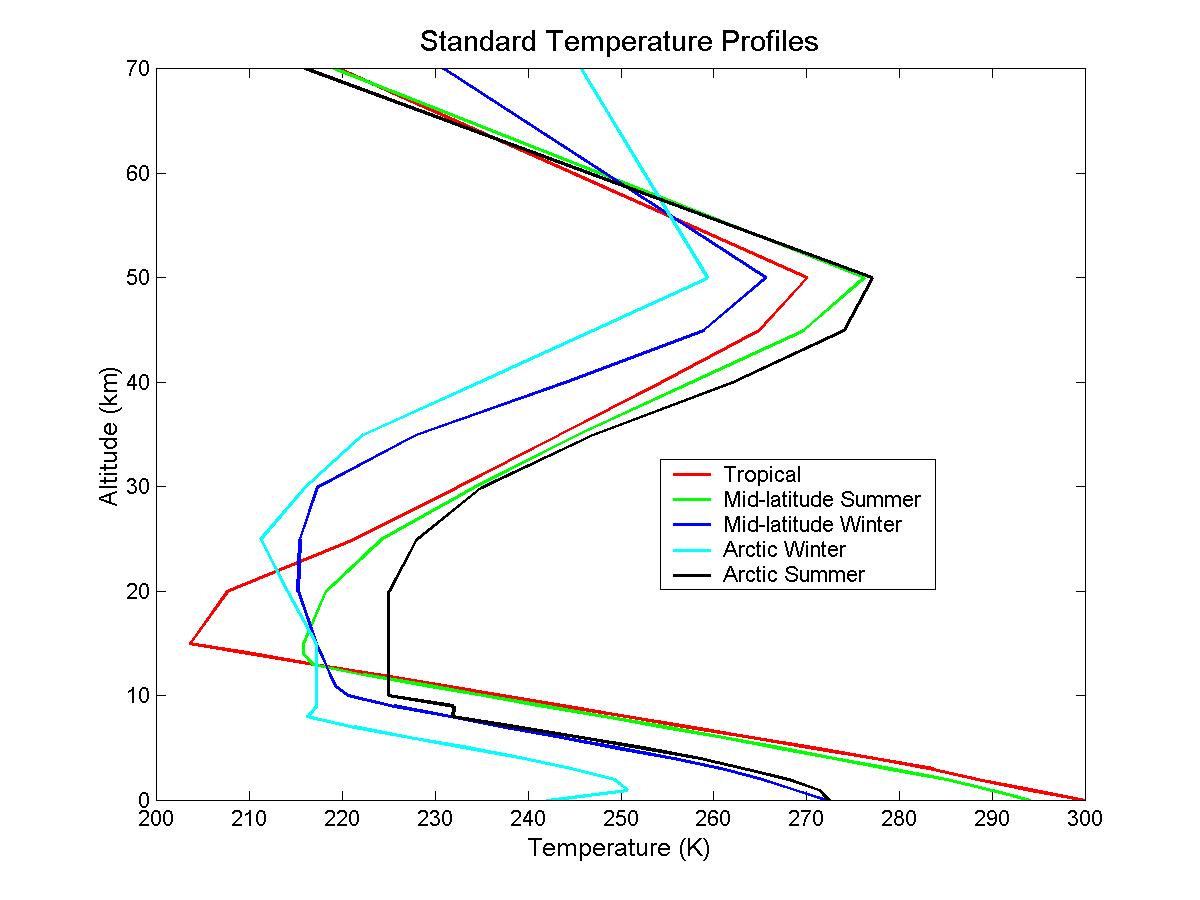More on the standard atmosphere
The standard atmosphere is an idealize atmosphere used as a reference the
vertical variations in temperature, pressure and density. The standard
atmosphere is used in determining altitude from pressure altimeters. You
must keep in mind that while the standard atmosphere is very useful as
a reference tool for aviation, there are large variations from the standard
atmosphere on any given day and region.
Aircraft performance charts are based on standard conditions, which rarely, if ever, occur. Nonstandard conditions, which are typical, affect aircraft performance and true air speed (TAS). The advertised service ceiling of an airplane is based upon standard conditions. This normally is not a problem unless you are flying near the limit of the aircraft's performance. This can occur when flying over mountains. When the atmosphere you are flying in is warmer than the standard atmosphere, the aircraft performance will be less than the performance charts advertise. So, if your aircraft's service ceiling is 13,500 feet, then you may think you can fly over a mountain whose altitude is 14,500 feet. The temperature at 13,500 for a standard atmosphere is -10C. If the true temperature is -4C, only 6 degrees Celius warmer than the standard atmospher, the density altitude is equivalent to 15,000 feet, so you will not clear the mountain!
Below are reference temperature versus altitude for different regions
of the globe at different times of the year. While all the profiles have
a troposphere, tropopause, stratosphere and stratopause,
these layers occur at different altitudes. For example, the tropopause
is lower in the arctic regions than the tropics. So, even a standard atmosphere would have to vary with geographic region and time of year.
Return to Lesson 1 Page.
Return to Weather For Pilots Main Page
Local
Madison Weather


